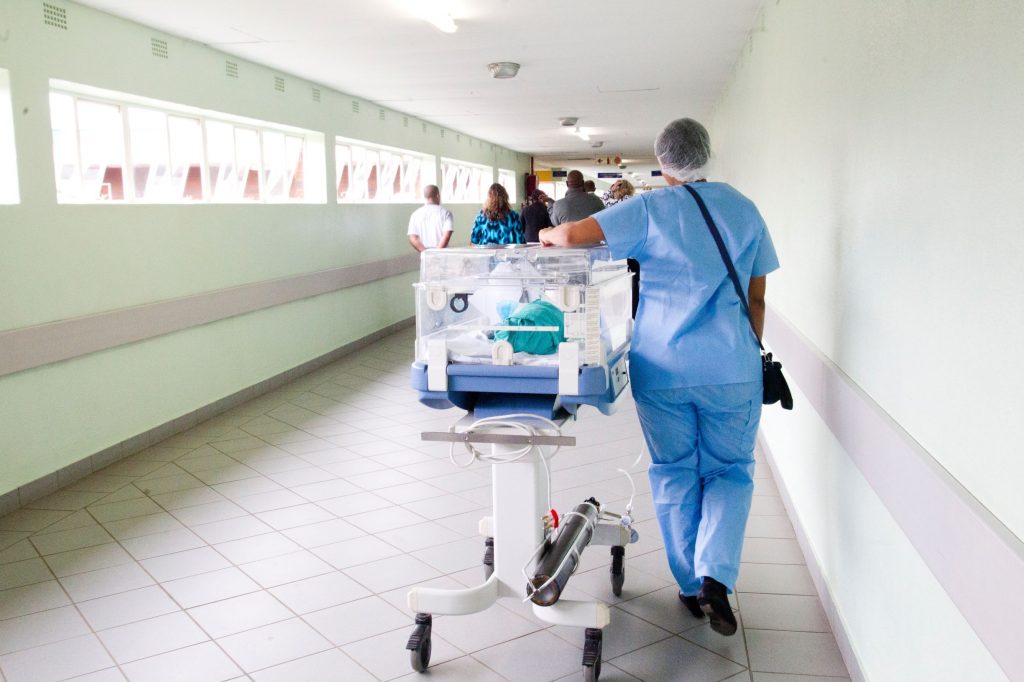In health care environments, the safety and well-being of patients and personnel is a top priority. Staff at hospitals, nursing homes, special-care centers, rehabilitation facilities and other medical settings work admirably to keep themselves and the people they serve secure, and to create a welcoming environment despite occasionally hectic circumstances.
Nevertheless, contentious incidents still occur in health care settings. In fact, nearly 75% of all workplace assaults happen in health care environments. Patients who wander and put themselves at risk of a fall represent another significant concern in hospitals and other treatment centers. Furthermore, health care facilities are repositories of sensitive information, supplies, and expensive equipment that can be stolen from right under administrators’ noses.
To help prevent and mitigate incidents that can lead to injury, theft, liabilities and other adverse outcomes, a growing number of health care facilities are leveraging innovative digital technologies. These include real-time communications (audio), surveillance (video), incident management platforms and more. By consolidating vendors for these systems, health care facilities can stitch them together to create a truly unified communications ecosystem. 
Coordinating and Communicating With Integrated PTT
Enter Team Communications by Motorola, a unified platform of various push-to-talk solution offerings:
- TLK 100: A two-way radio device that operates on 4G and Wi-Fi to provide nationwide coverage. Used by healthcare security with large, sprawling operations.
- WAVE: An Android/IOS application that provides PTT capabilities over any Wi-Fi or cellular network. Used by physicians, nurses, and administrative staff.
- MOTOTRBO: A digital two-way radio platform that is highly scalable and robust. Used by facilities and security at hospitals.
The result is a fully-integrated radio and digital unified communications solution that:
- Helps health care personnel coordinate daily care and share critical information while on the job.
- Improves emergency preparedness with custom talk groups that function across different types of endpoints.
- Enables “All Talk” functionality to reach every integrated device in the most dire emergencies.
The combined effects of these benefits include the ability to communicate and share information faster to help mitigate risks, and a greater degree of preparedness to handle adverse incidents.
Preventing and Mitigating Potential Issues
Digital and analog PTT integration is crucial for communicating both during routine and out-of-the-ordinary situations. But other digital technologies are also necessary in the prevention and mitigation of incidents at health care facilities. These include:
- Physical access control: RFID card readers, wireless lock systems that can remotely grant access to personnel, intercoms with embedded cameras and other access-control technology is important for preventing unauthorized access to certain areas while simplifying access for authorized staff.
- Video surveillance and analytics: Easy-to-install, strategically placed HD cameras can provide 24/7 surveillance to monitor patient safety, identify behavior that may be indicative of theft or hostility, and act as a source of documentation after an incident has occurred. Equally important, real-time video analytics can autonomously recognize key incidents captured on camera—a patient fall, for instance—so that the appropriate personnel can be informed and dispatched faster. Alerting and response efforts, including contacting emergency responders, can then be coordinated over PTT.
- Access control management (ACM) software: This software is necessary for managing video surveillance, but also access-control safeguards such as wireless locks, intercoms and alarm systems.
With proactive video analytics and streamlined communications, nursing staff and security teams can take swift action to prevent a crisis, and share information quickly and easily as they respond to unfolding situations.
Documenting and Analyzing Incident Data
If, say, a patient becomes belligerent, it’s important to sound the alarm early so that actions can be coordinated to resolve it swiftly. Video surveillance and communication technology are invaluable as incident-notification and -response resources. But any documentation and data associated with the incident will be crucial for further investigations, potential liabilities and for helping to prevent recurrence of a similar event.
For these purposes, incident management software makes it easy to document key information in multiple formats, including video and text descriptions of what has occurred, when it occurred, who was involved and what responses were taken. Incident management software also makes it easy for security operations teams to report a live situation to the authorities, contact specific individuals or talk to groups within the facility, and, if necessary, perform an All Call. This full-fledged functionality is only possible when communication, video and incident management systems are seamlessly integrated.
Finally, incident management software can be used to create higher-level reports that track incidents over the course of a specific time frame, categorize them by type of incident, average response time, successful resolution and more. These insights can help staff identify liabilities and manage risks more effectively.
Learn More About Integrated Solutions for Health Care Security
From cellular PTT, to comprehensive video surveillance, self-learning analytics, access control and more, the experts at Day Wireless Networks have the expertise and experience necessary help health care environments optimize their communication and security technology. Contact us today to learn more about end-to-end incident management integration.